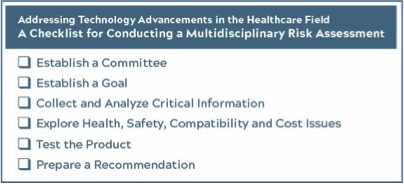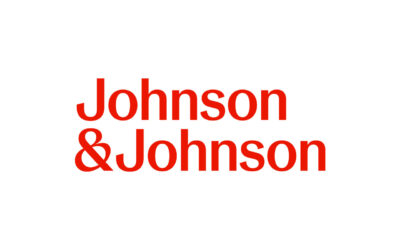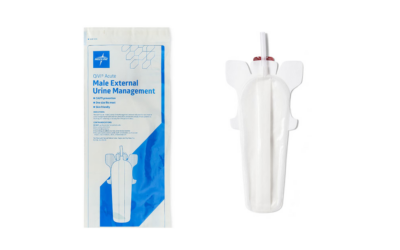By Rose Seavey, MBA, BS, RN, CNOR, CRCST, CSPDT
Technological advancements in the healthcare field are critically important, as they can both lengthen and improve quality of life.

Rose Seavey, MBA, BS, RN, CNOR, CRCST, CSPDT
Despite the potentially significant benefits of implementing new advancements immediately, healthcare facilities often delay implementation as they await updated standards and subsequently manufacturer’s Instructions for Use (IFUs) reflecting these new technologies.
Though while still relevant, these standards remain a major impediment to the adoption of emerging technologies, including those within the realm of sterile processing. Many national standards, including those maintained by the Association for the Advancement of Medical Instruments (AAMI) and the Association of Perioperative Nurses (AORN), are updated on a five-year cycle.
Even standards with more frequent updates or amendments, such as the AAMI ST79 steam sterilization standards, can’t possibly keep pace with technology. The process of updating the ST79 standards requires stakeholder meetings (including manufacturers’ representatives, laboratories, federal regulatory agencies, and healthcare workers), a public comment period, and then final adoption by the Sterilization Standards Committee. This arduous process can typically take up to three years, by which time even more advanced innovations may have come to market.
Given this gap, healthcare institutions need an avenue by which to evaluate and adopt newly developed products and technologies that current standards presently do not address.
Healthcare facilities owe it to their patients to not delay implementation of new technology or tools that can improve patient care, particularly when these advancements can do one or more of the following:
● Enhance patient safety
● Decrease the risk of infection transmission
● Increase speed or improve efficiency
● Decrease cost of care
Fortunately, there is an alternative to waiting until the recommended practices catch up with technological advancements: facilitating an in-house multidisciplinary risk assessment.
Purpose of multidisciplinary risk assessment
Institutions that provide healthcare services are held to demanding standards. Oversight bodies, including the Centers for Medicare and Medicaid Services (CMS) and the Joint Commission (TJC), regularly audit hospitals and other healthcare facilities to ensure that practices and procedures align with the published standards.
According to AAMI “When any product is being considered for use within a facility, it is the responsibility of the intended users to evaluate the product using a systematic process of
product evaluation and to establish policies and procedures that reflect this process and that
are appropriate to the health care organization. This is especially true when the health care organization is considering a product for which there are no guidelines from AAMI or other similar professional organizations.” 1. p147, 2. p 20
If a healthcare institution elects to adopt technology that exceeds existing standards, staff must provide evidence that they have undertaken a rigorous process of evaluation, commonly called a “risk assessment,” before making the change. Healthcare facilities that cannot provide this evidence run the risk of being cited when audited by accrediting agencies. Because the loss of accreditation could have dire financial consequences, avoiding citations is imperative.

Process for multidisciplinary risk assessment
Recognizing that the rate of product development was discordant with the rate of standards update, AAMI and AORN have developed recommendations through which healthcare providers can evaluate new products that may not be covered by existing standards. This multi-faceted risk assessment offers a clear structure for product evaluation, providing much-needed guidance and clarity for healthcare organizations seeking to implement new technology.
Healthcare facilities can adopt the core tenets of the risk assessment process for their new product risk assessment programs. They can start with the following steps.
1. Establish a Committee
There are many avenues by which a new product comes to the attention of a healthcare institution; however, it often starts with a champion – someone who believes in and wants others to embrace the product. This champion could be a surgeon, a nurse, a sterile process professional or even an infection preventionist.
If adopted, the new technology will have an impact well beyond the champion. To ensure all stakeholders have a voice in the evaluation and decision processes, create an inclusive, multidisciplinary assessment committee. It is, after all, impossible to foresee all benefits or risks associated with using a new product unless all stakeholders are represented.
Hospital administrators can be very helpful with facilitating the formation of the committee at the behest of the champion. In fact, given that there can often be a gap between the “front line” and the C-suite, every effort should be made to include a champion at the administrative level as well. This individual is familiar with the facility’s political climate and budgetary constraints, and may be helpful in navigating them successfully.
The committee’s composition should be a function of the number of people potentially affected by the technology under evaluation. If the product will be used extensively – and impact a sizable number of individuals – the committee should be larger. In contrast, resist the urge to overstaff a committee when the product will be used in more limited or specialized settings.
While the product evaluation and selection committee membership will depend on the product under evaluation, as a general rule, anyone who is going to be impacted by the decision should be represented.
“For example, for a product related to steam sterilization, representation could include, but not
necessarily be limited to, Infection Prevention and Control, Operating Room, Sterile Processing, Risk Management, and Staff Development/Education.” 1 pg. 147
A representative from the manufacturer can be an essential part of the process. The representative brings a wealth of information and product access that can be critical to a reliable multi-factor evaluation. “Manufacturers’ representatives can provide both clinical and technical data related to product research, processing, packaging, disinfection, sterilization, and environmental conservation.”3. II.a. Giving this individual an opportunity to be a part of the process can provide the committee with ready access to this information potentially saving time and resources.
2. Establish a Goal
Healthcare facilities certainly don’t have the resources to adopt technologies simply because they are new and exciting.
All technology should have clear intent (or goal) to tangibly advance patient care, improve patient satisfaction, reduce operating costs or make a meaningful improvement in existing processes. Each of these goals can be equally valid but should be established at the inception of the committee.
When setting goals, committee members must consider their facility’s risk-tolerance threshold. With any new product or procedure comes a bit of uncertainty. In spite of meticulous review, unforeseen negative impact is still possible. For example, being an early adopter may put an organization ahead of its competitors, but if the product has a hidden flaw, this early adoption could ultimately erode public trust in the institution as a whole. The committee needs to engage in critical conversations regarding how much risk the institution can, and is willing, to handle.
3. Collect and Analyze Critical Information
Once the committee is formed and has agreed upon the goals for the new product, the committee must then gather information to evaluate and discuss.
Formal Sources
Just like the structure of the committee itself, the materials it reviews should represent a broad range of professional interests and perspectives within the organization. Multidisciplinary risk-assessment committees should utilize all of their resources, from working with the vendor to searching electronic sources and reaching out to others within their networks to procure critical information.
Appropriate documents, when available, may include:
● FDA 510 (k) clearance letters
● Device manufacturer literature and written IFU
● Reviews from key opinion leaders (KOL)
● Experiences from past users
● Peer-reviewed articles
● Model policies for product use
● Product validation studies
Peer-reviewed published articles may be rare for technology that is new to the market, therefore the committee may be reliant on the data generated by the product manufacturer and KOLs.
Published standards and guidelines from both AAMI and AORN recommend the device manufacturer’s written IFU be followed, however, many IFUs are outdated. For example, a surgical instrument’s IFU may not include a new sterilization method although the technology satisfies all of the other criteria listed for consideration in the assessment. In such situations, a new technology is often at a significant disadvantage since there is no way to have developed the extensive IFU resume at this early point in its product life. The situation leads to a circular requirement where the medical device manufacturer demands that the new technology have a sufficient install base to justify the assignment of their resources to the task associated with update of an IFU. Ironically, it is difficult for the new technology to build an install base without inclusion in the device manufacturer’s IFU. Therefore, the multidisciplinary risk assessment team should take that into consideration. They should thoroughly review the validation studies and the Food and Drug Administration (FDA) 510K clearance Indications for Use for the device (if applicable).
Informal Sources
Committee members can also pull information from their established professional networks. By discussing these emerging technologies with peers when attending conferences and trade shows, committee members can gather useful anecdotal information to help form their decisions.
Benchmarked Data
Another important source of information is that which is gathered through benchmarking. By identifying gaps between the performance of the committee’s facility and that of top performers, the team can more effectively determine whether the new technology can meaningfully reduce these deficits.
4. Explore General Considerations
Bringing a new technology into regular use will impact many people within the healthcare facility. To determine whether this impact will be positive or negative, and whether the organization is willing and able to embrace the change, the committee needs to weigh considerations in several different categories.
Health and Safety
The health and safety of patients and staff will always be the primary concern. Regardless of any other benefits, a technological change that does not enhance, or at least maintain, levels of safety should never be adopted.
When exploring these considerations, the committee should focus on how the new product may improve patient care and if there are any potentially negative impacts on overall safety.
Effectiveness
Akin to health and safety is the new technology’s effectiveness. The core question is, “Does this product do what it promises to do?”
The most valuable information regarding effectiveness will likely come from validation studies, FDA clearance letters, reviews of product use in other facilities, as well as from on-location trials if the team undertakes them.
Whenever possible, committees should draw their information from quantifiable data for maximum reliability. The use of quantifiable data is a critical part of the continuous quality improvement (CQI) process. Objectivity is a hallmark of this approach, and no data is more objective than quantifiable data. As such, this type of information should be given more weight in the decision-making process.
Materials Compatibility
Healthcare technologies don’t often operate entirely independent of one another. Instead, they are woven into complex networks of elements all working together to provide service and care.
When purchasing a new device, healthcare institutions want new equipment to work with existing equipment.
Explore this compatibility to determine whether there exists a reasonable way to integrate this product into the existing network of goods.
Cost-effectiveness
Cost-effectiveness goes hand-in-hand with materials cost, but it’s a more extensive and telling measure than can be calculated by looking at materials cost alone. It’s essential to look at costs holistically. While the purchase price of a new product may exceed the one it’s replacing, the important metric is the cost of operation over the product’s lifetime.
For example, facilities may still save money purchasing a sterilizing solution that costs more if it allows them to sterilize more quickly. Because they could sterilize more rapidly, they could turn instrument sets over more often and realize a savings by reducing the number of instruments they need to purchase.
5. Try the Product
Testing the product in-house is always best as it allows stakeholders to see as authentically as possible how the new product will impact the everyday functioning of the institution. The process requires a testing sub-committee team.
The team should communicate their desire to engage in a trial with their vendor. Willingness to offer products for testing depends not only on the supplier in question but on the nature of the product itself. It simply may not be feasible for vendors to make highly technical or physically large products available for trial.
However, when a trial is possible, individuals tasked with it need to adhere to the same rigorous and deliberate way the committee applies the product evaluation process as a whole.
To ensure that the trial is sound and the results reliable, the trial sub-committee should set and follow a clear product testing procedure and schedule. While the team may add or delete steps to reflect the unique needs of the facility or the distinctive facets of the product, common steps in this process include:
1. Stating desired outcomes
2. Establishing a time limit for the trial
3. Developing a product evaluation tool
4. Planning and completing any necessary pre-trial in-service
5. Conducting trial
6. Gathering data
7. Analyzing data
8. Determining the degree to which desired outcomes were met
6. Prepare the Report
By the end of the assessment process, the members of the committee should be intimately familiar with the product and its benefits (or lack thereof, depending on results). Next, the team needs a mechanism for sharing this information with those in the position to make purchasing and planning decisions.
The most efficient method of information-sharing is the preparation and distribution of a report with an executive summary. Along with providing an accessible means of information sharing, the report serves as documentation of the completion of the evaluation process and a written record of the ultimate findings.
The report should be thorough, but succinct. Readers should be able to extract essential information quickly and clearly see how the team reached a decision.
The report should clearly outline:
● Goals
● Benefits
● Weaknesses
● Financial impact
● Decision
● Justification for decision
A written record of all of this information provides an easily referenced and straightforward system for both internal and external process review.
Proactive Planning
Technology, both in sterile processing and other areas of healthcare, will continue to advance. Proactive healthcare institutions should establish internal evaluation policies that include a multidisciplinary risk assessment.
A particularly formidable challenge continues to be closing the gap between the wants and needs of patient-facing healthcare workers and the C-suite decision-makers. While all want improved patient care, the metrics these groups use to measure success often differ. The use of these different measures can create a communication barrier and potentially slow the process of implementation.
A multifaceted process provides a mechanism to foster this cross-level communication, allowing all team members to have a voice while giving everyone the opportunity to see – by their own distinctive measures – that the product under consideration will, in some way, enhance the quality of patient care.
Always bear in mind: Instead of focusing on whether to adopt a new product, all members of the team should ask themselves, “What is the benefit of the product to our patients?”
And the answer to this question should determine the next steps, allowing healthcare institutions to maximize time and continue to advance the quality of care for the patients who trust them.
– Rose Seavey is President/CEO of Seavey Healthcare Consulting and formerly the Director of the Sterile Processing Department at The Children’s Hospital of Denver. She served on the AORN Board in 2008-2010 and is past President ASHCSP. She received numerous awards such as AORN’s award for Mentorship and Outstanding Achievement in Nurse Education. In addition, she was given the IAHCSMM award of Honor. She is the author of the book “Sterile Processing In Healthcare Facilities: Preparing for Accreditations Surveys,” published by AAMI. She serves on several AAMI committees writing national standards for reprocessing.
Sources:
1. ANSI/AAMI ST79:2010 & A1:2010 & A2:2011 & A3:2012 & A4:2013 Comprehensive guide to steam sterilization and sterility assurance in health care facilities, (section 12).
2. ANSI/AAMI ST58:2013 Chemical sterilization and high-level disinfection in health care facilites (section 5).
3. AORN Guidelines for product selection. In: Guidelines for the Perioperative Practice. Denver, CO: AORN, Inc; 2016








